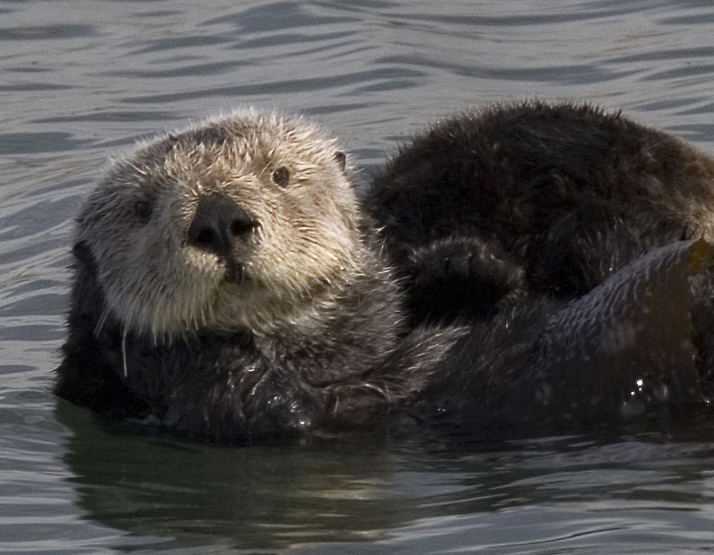Science News
Sea Otter Numbers

There are many numbers when it comes to California (or southern) sea otters. Unfortunately, lately, those numbers are all very low.
Once upon a time, there were close to a million of the California sea otters and their range extended many miles. According to SFGate, they “frolicked from Alaska's Prince William Sound to Baja California.”
Over a period of 150 years, however, they were hunted so extensively for their fur that it was believed they had gone extinct.
Then, in 1938, “a small colony of about 50 was discovered south of Monterey… They have been listed as threatened under the Endangered Species Act since 1977.” [UPI] And since then, their numbers had been rising fairly steadily and their range extended “from Pigeon Point to Gaviota State Park” [SFGate], or about 270 miles. That is, until this year. From Wired:
Annual surveys of the California sea otter population, which are averaged over three years to compensate for variability in observation conditions, show the overall population has declined by nearly 4 percent compared to estimates in 2009, and the number of sea otter pups has declined by 11 percent. The otter’s range along the central California coastline has also shrunk by nearly 30 miles.
We contacted Andrew Johnson, Manager of the Sea Otter Research and Conservation program (SORAC) at the Monterey Bay Aquarium, via email to clarify what might be causing the decline.
The numerous and varied threats faced by sea otters include natural factors, such as attacks by white sharks, El Niño events, and changes in prey availability, and anthropogenic factors, such as pollution inputs from land-based sources, entrapment in fishing gear, boat strikes, gunshot, etc. The sheer diversity of these threats makes recovery difficult… The population has a high rate of infectious disease—upwards of 50% of annual deaths occur as a result of disease, much of which transfers into the ocean from land sources.
The California sea otter population currently rests at just above 2,700, a very low number indeed. In addition, Scientific American reports today that another number has dropped for these protected animals—their funding:
Some of the money available to study sea otters and help save them comes from California's Sea Otter Fund, which pays for much of the research on the species and is voluntarily funded by California taxpayer contributions. This year's donations are $31,000 short of target, leaving the fund vulnerable to termination by the state tax board. Board spokesman John Barrett told The Sacramento Bee that the fund likely will be eliminated this year if donations do not increase immediately.
Why should we care about these creatures? Well, their health tells us a lot about the health of the ocean. SORAC’s Johnson had this to say:
As the apex predator in this system, sea otters indicate problems throughout the system, such as contaminant and pathogen pollution, disease, mismanagement… of watersheds, presence of biotoxins, and climate change effects… In other words, sick sea otters equate to a sick system. Eventually, the problems within the system will become more evident—contaminated shellfish, closed beaches, die-offs of plants and animals, systematic changes that will never resolve. So, the sea otter is trying to tell us something important, and we need to listen to this message before irreparable damages occur throughout the entire nearshore system.
So what can you do? At the end of September, look for Sea Otter Awareness Week and Sea Otter Days at the Monterey Bay Aquarium and here at the California Academy of Sciences. Also, Johnson says we can all help by doing small things everyday:
People can… make sure that they don’t deposit toxic materials (e.g., motor oil, lawn-care chemicals) where they can wash into streams or the ocean; they can reduce their carbon footprint; they can lobby legislators to pass ocean-friendly legislation; they can dispose of garbage and waste in a proper manner; they can consume seafood items harvested from sustainable fisheries... We need to support major renovation of our water management infrastructure in coastal areas to protect delicate marine ecosystems. The biggest help will come from local, state, and federal decisions that support better wastewater and watershed management.
Let’s turn those numbers around.
Creative Commons image by Mike Baird